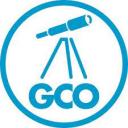MOST POPULAR

Add to my favorites
Remove from my favorites
Category: Biomedical funding and jobs
Subcategories: Fellowships
The Giovanni Armenise Harvard Foundation grant and fellowship programs supports individual scientists at Harvard Medical School and in Italy Registration not required.
Click here for more informations
Add to my favorites
Remove from my favorites
Category: Biomedical funding and jobs
Subcategories: Fellowships
Postdoctoral Fellowships of Human Frontier Science Program HFSP are available for scientists who wish to work in foreign laboratories, with emphasis on individuals early in their careers who wish to obtain training in a different field of research. Fellows who return to their home countries are eligible to apply for a Career Development Award. Cross-disciplinary fellowships are intended for postdoctoral fellows with a Ph.D. degree in the physical sciences, chemistry, mathematics, engineering and computer sciences who wish to receive training in biology Registration not required.
Click here for more informations
Add to my favorites
Remove from my favorites
Distributed trough GitHub
Category: Imaging software
CISMM allows: Image tools listing
CISMM is one of several groups providing visualization and analysis tools freely usable by the biomedical microscopy community. There are a number of freely-available tools from other National Research Resources and elsewhere. We list some of them here for easy reference, along with brief descriptions Registration not required.
Click here for more informationsThis page allows you to generate random integers in a given interval.
Click here for more informations
Add to my favorites
Remove from my favorites
calculate body shape Index
Category: Calculators and converters
The web site calculates the body shape index (ABSI). A body shape index that, by quantifying abdominal adiposity relative to BMI and height, is thought to be a better predictor of mortality than BMI (see Krakauer & Krakauer, PLoS ONE 7, e39504, 2012; Ahima & Lazar, Science 341:856, 2013). Registration not required.
Click here for more informationsThe Human Metabolome Database (HMDB) is a freely available electronic database containing detailed information about small molecule metabolites found in the human body. It is intended to be used for applications in metabolomics, clinical chemistry, biomarker discovery and general education. Registration not required.
Click here for more informationsThe aim of the GLOBOCAN project (developed by IARC) is to provide contemporary estimates of the incidence of, mortality, prevalence and disability-adjusted life years (DALYs) from major type of cancers, at national level, for 184 countries of the world. The GLOBOCAN estimates are presented separately for each sex and, for incidence and mortality data, for ten age groups. 1-, 3- and 5-year prevalence data are available for the adult population only (ages 15 and over). DALYs, life years lost lost due to premature mortality (YLLs) and years lived with disability (YLDs) are available for all ages only. Registration not required.
Click here for more informations
Add to my favorites
Remove from my favorites
Category: Statistics miscellanea, Statistical distribution
Subcategories: GraphPad
Randomly assign subjects to groups; Simulate data by generating random numbers; Randomly select a subset of subjects. Registration not required.
Click here for more informationsMorpheus (from Broad Institute) is a web-based versatile matrix visualization and analysis software. View your dataset as a heat map, and then explore the interactive tools in Morpheus. Cluster, create new annotations, search, filter, sort, display charts, and more. Registration not required.
Click here for more informationsThis website provides a variety of online calculators, such as math and physics, financial, statistics, engineering and conversion calculators Registration not required.
Click here for more informationsImageJ from NIH is the most diffused public domain Java image processing program suitable for several scientific applications. Registration not required.
Click here for more informationsThe HIV databases contain data on HIV genetic sequences, immunological epitopes, drug resistance-associated mutations, and vaccine trials. Registration not required.
Click here for more informationsGoogle Scholar allows users to search for digital or physical copies of articles, whether online or in libraries Google Scholar is relatively quick and easy to use. “Scholarly” searches will appear using the references from “’full-text journal articles, technical reports, preprints, theses, books, and other documents, including selected Web pages that are deemed to be “scholarly.’” Because most of Google Scholar's search results link directly to commercial journal articles, a majority of the time users will only be able to access a brief summary of the articles topics, as well as small amounts of important information regarding the article, and possibly have to pay a fee to access the entire article. Google Scholar is as easy to use as with the regular Google web search, especially with the helpfulness of the "advanced search" option, which can automatically narrow search results to a specific journal or article. The most relevant results for the searched keywords will be listed first, in order of the author's ranking, the number of references that are linked to it and their relevance to other scholarly literature, and the ranking of the publication that the journal appears in. Using its "group of" feature, it shows the available links to journal articles. In the 2005 version, this feature provided a link to both subscription-access versions of an article and to free full-text versions of articles; for most of 2006, it provided links to only the publishers' versions. Since December 2006, it has provided links to both published versions and major open access repositories, but still does not cover those posted on individual faculty web pages;[citation needed] access to such self-archived non-subscription versions is now provided by a link to Google, where one can find such open access articles. Through its "cited by" feature, Google Scholar provides access to abstracts of articles that have cited the article being viewed. It is this feature in particular that provides the citation indexing previously only found in Scopus and Web of Knowledge. Through its "Related articles" feature, Google Scholar presents a list of closely related articles, ranked primarily by how similar these articles are to the original result, but also taking into account the relevance of each paper. Registration not required.
Click here for more informationsDescription not available. Registration not required.
Click here for more informations
Add to my favorites
Remove from my favorites
Category: Statistics miscellanea, Statistical distribution















